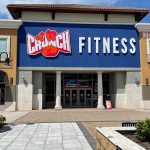According to the Sporting Goods Manufacturers Association’s Sports, Fitness, and Recreation Participation Overview (2010 edition), 23.1% of active Americans have indicated that they plan to spend more on sports equipment in 2010 than they did in 2009. This additional spending is a sharp increase over 2009 when only 4.5% of active Americans spent more on sports, fitness, and recreation than they did in 2008, and 25.5% reported they spent considerably less.
But the report also found that the decision to play and participate in many activities is largely motivated by consumers who want more value from their workouts, athletic endeavors, and recreational sports experiences.
“Feeling more pressure from diminished disposable income and leisure time, people looked in 2009 to get the best workout and most enjoyment possible from the money, time and physical exertion they put into their sports and fitness activities,” said Tom Cove, SGMA president and CEO. “Active Americans favored easily accessible, low cost-to-participate, efficient sports and fitness options.”
Some of the findings from the report confirm the belief that consumers want more bang for their buck when it comes to spending time exercising at a health club, in a gym, on a playing field, or at a public park:
1.) Group Exercise: It’s Motivating & Has Social Appeal. Class-oriented fitness activities — like high-impact aerobics, low-impact aerobics, and step aerobics — had solid participation gains in 2009. Group exercise classes provide an economically attractive and psychologically uplifting environment that inspires people to perspire, alongside friends and colleagues.
2.) Running: It Can Be Done Anywhere at Anytime. There are nearly 44 million runners in the U.S., up 6.7% in 2009 vs. 2008. The economic benefit of running is that it doesnt require a health club membership to participate. Running is also a convenient workout for many people because it can be enjoyed in a small group or on your own.
3.) There’s No Pay to Play. While basketball’s origins can be traced to school gyms, 57% of today’s basketball participants actually play pick-up and casual games in driveways and neighborhood parks.
4.) The Great Outdoors: An Affordable Playground. Hiking, camping, and freshwater fishing can be enjoyed with limited expense.
5.) Tennis: It Has Social, Fitness, & Competitive Appeal. Since 2000, tennis participation has jumped 42.8%. Whether it’s singles or doubles, played indoors or outdoor, traditional or cardio, people are falling in love with tennis again.
6.) Bicycling: Its Accessibility Is Appealing. Interest in road cycling increased 5.3% to 40.1 million participants in 2009. Bicycling is time flexible and can be done close to home.
“Looking back over the past decade, it’s exciting to see how sports and fitness have evolved to meet the needs and desires of active consumers,” said Cove. “The tremendous growth of Pilates and elliptical training show how appropriate technology can bring so many people into an active lifestyle. At the same time, surging growth rates for lacrosse and tennis reinforce the fundamental role that sports play in American culture and lifestyle.”
Surging Sports: Statistically Speaking
Since 2000, a number of fitness activities, competitive sports, and recreational endeavors have shown statistically significant growth. Listed below are the top ten gainers in participation:
1. Pilates Training, 8,653,000, 456.2%
2. Elliptical Motion Trainer, 26,521,000, 259.8%
3. Lacrosse, 1,197,000, 131.1%
4. Table Tennis, 19,301,000, 51.8%
5. Stretching ,36,310,000, 47.5%
6. Stationary Cycling (Group), 6,831,000, 45.1%
7. Tennis, 18,534,000, 42.9%
8. Running/Jogging, 43,892,000, 39.8%
9. Treadmill, 51,418,000, 37.9%
10. Other Exercise to Music, 22,045,000, 37.2%
Since 2008, six activities have had statistically significant, double-digit growth in participation. They are cardio tennis (41.8%), cardio kickboxing (20.1%), snowshoeing (17.4%), bow hunting (13.5%), yoga (13.2%), and table tennis (12.2%).
What’s Hot?
According to SGMA, the sports and activities with the highest levels of interest among all participants in 2009 were fitness-related, as fitness activities accounted for nine out of the top 15 athletic pursuits:
Most Popular Sports and Fitness Activities Based on Overall Participation (age 6 and above; U.S. residents; source: SGMA/Physical Activity Council)
Rank/Sport 2009 Participation
1. Walking for Fitness 110,095,000
2. Bowling 57,293,000
3. Treadmill 51,418,000
4. Free Weights (Hand Weights) 45,934,000
5. Running/Jogging 43,892,000
6. Billiards 43,005,000
7. Freshwater Fishing 40,961,000
8. Bicycling (Road/Paved Surface) 40,140,000
9. Weight/Resistance Machines 39,752,000
While fitness is the industry’s leading overall participation category, the gateway to physically active lives is through team sports. Many Americans initially get introduced to athletic activities through team sports organized by local recreation centers or by their schools. Basketball remains the most popular team sport, from the point of view of participation.
Leading Team Sports in the USA
(age 6 and above; 2009 participants; U.S. residents; source: SGMA/Physical Activity Council)
Rank/Sport Total Participants
1. Basketball 24,007,000
2. Soccer (outdoor) 13,837,000
3. Baseball 13,691,000
4. Touch Football 8,959,000
5. Slow-Pitch Softball 8,525,000
This year’s Sports, Fitness, and Recreation Participation Overview has overall participation figures for 117 sports in 14 different categories (fitness activities, equipment exercise, team sports, racquet sports, outdoor activities, fishing, winter sports, personal contact sports, indoor sports, wheeled sports, hunting, shooting sports, water sports, and other sports/activities). Copies of the Sports, Fitness, and Recreation Participation Overview (2010 edition) are available from www.sgma.com.
This year’s study has been done as a joint effort of The Physical Activity Council, a collaboration of sports associations that have been doing participation research separately for a number of years: Sporting Goods Manufacturers Association, Tennis Industry Association, National Golf Foundation, IHRSA, Snowsports Industries America, The Outdoor Foundation, and the United States Tennis Association.















